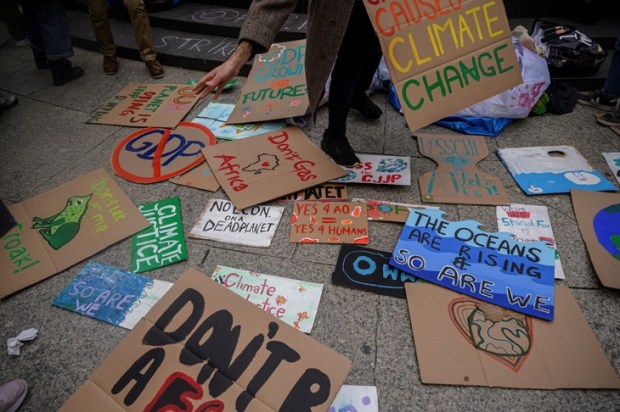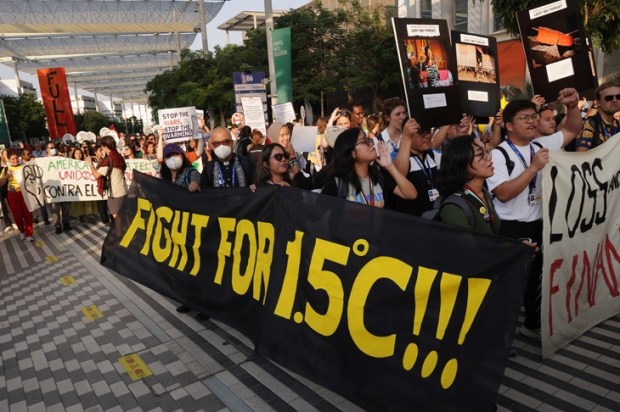Aboriginal anthropologist and activist Dr Marcia Langton is probably the most influential figure in the Indigenous Voice to Parliament Referendum Working Group.
She has made the real objective of this Voice quite clear. It is nothing more than the first (and enabling) step in the implementation of the Uluru Statement which demands ‘truth telling’, treaty (inevitably involving reparations and rent), and some form of co-sovereignty or separate sovereignty.
Are activists prepared to countenance the corruption of what it means to be an Aborigine, so long as it suits their narrative in the Voice discussion? I’m talking here of Dark Emu by Bruce Pascoe, which has reputedly sold over 360,000 copies. It postulates that the Aboriginal people of Australia, rather than being the nomadic hunter/gatherers society that years of ethnological and anthropological research have told us they are, were actually a sophisticated, sedentary agricultural society that lived in large towns of more than 1,000 residents.
Some may argue that such reworkings of history do not extol the achievements of Aboriginal people but has rather constructed a false narrative about a sophisticated society that had no right to be colonised. Such intent may be seen as a way to undermine the legitimacy of colonisation as a basis for granting some form of sovereignty. Perhaps that is why Dr Langton is so supportive of Dark Emu’s claims, having said right from the start:
This is the most important book on Australia and should be read by all Australians.
She also leapt to the defence of Dark Emu when anthropologist Dr Peter Sutton and archaeologist, Dr Keryn Walshe published a scholarly work, Farmers or Hunter/Gatherers? The Dark Emu Debate, demolishing the original text. When the first exposes of Dark Emu emerged in 2019, courtesy of the Dark Emu Exposed website and my own book Bitter Harvest, we could safely be ignored because we were so-called hateful far-right extremists. But Sutton and Walshe could not be ignored and Dark Emu had to be rehabilitated.
Hence, the recent screening by the ABC of The Dark Emu Story, produced by Blackfella Films. You can read my detailed critique of the film here, but one aspect of it deserves special scrutiny and that is the contributions by Dr Marcia Langton.
Langton makes her first appearance telling us that Pascoe had grown up under an education system that taught him the ideology of the British Empire which postulated that there are superior races and inferior races. Funny, I was educated at the same time as Pascoe, and I don’t ever remember this sort of teaching in my schooling.
She then goes on to say that Dark Emu:
…shifts the paradigm from savage to fully-fledged human being.
What is Langton saying here? What is the paradigm to which she refers? Is she saying that, until the publication of Dark Emu, most Australians regarded Aborigines as less than human? Or is the paradigm Pascoe’s promotion of pre-colonial Aborigines from hunter/gatherers to agriculturalists? In other words, hunter/gatherer people are less than human? Either way, it’s a pretty offensive comment.
But let me return to the subject of the book. Here is Pascoe’s summary of his theory:
If you just go around picking a berry here, opportunistically killing a kangaroo there, that is hunting and gathering. But if you’re sowing seed directly onto a ground that you’ve prepared, you know what you’re doing, because you know that plant will send up a shoot and grow. Then you come back at the right time, and you harvest that, and you save some of the seed from the harvest to sow again, that’s not hunting and gathering, by definition.
For Pascoe’s theory to hold up, he must be able to demonstrate that Aborigines sowed and cultivated seeds or tubers. Without that simple act, they could not be classed as agriculturalists.
Sutton and Walshe argue that Aborigines did not sow seed. They argue that Aborigines, across the entire continent, practised a ceremonial form of sowing which they call ‘spiritual propagation’.
Here Langton gives her views on this:
Inasmuch as practices of Indigenous people across the country, and Torres Strait Islander peoples and knowledge systems about the seasons –the sun, the moon, tides – all of these are tangled with religious ideas, and this is why Sutton and Walshe are wrong. It’s not simply spiritual. It’s an entanglement of economic systems and religious systems.
Not a particularly rigorous rebuttal. Here’s Pascoe’s take:
Aboriginal people celebrated everything with song, dance and philosophy. Everything. There is a spiritual element to everything, but it didn’t mean they didn’t know how plants grew. And spiritual propagation. What’s the inference there? That Aboriginal people were appealing to the Gods, please give us more of this, give us more of that?
Sutton never claimed that Aboriginal people didn’t know how plants grew. He maintains that they did know but chose not to sow seed. Presumably because they knew that, relying as they did on hardy well-adapted naturally occurring native species – rather than domesticated and cultivated species – other than in exceptional circumstances, nature would generally provide each season. And on those occasions when it didn’t, they accepted that they would do it tough. And that was the observation of every explorer and settler.
Here’s another thoughtful contribution from Dr Langton:
I call it the ooga booga school of anthropology. Y’know, an anthropologist goes off to the study the bongo bongo people who do the ooga booga. It is unbelievable that a scholar would refer to the vast variety of economic systems and practices across pre-colonial Australia as spiritual. And that’s what Sutton and Walshe do.
In the entirety of Dark Emu, by which Langton sets such store, Pascoe is able to give only three – that’s right, only three – examples of Aborigines being observed sowing seed. None of them appear in Sturt, Mitchell or Giles. They all occur in the 20th Century, they are all small-scale broadcast by hand, and they are all, very likely, examples of ‘spiritual propagation’. This one certainly is: ‘Alice Duncan-Kemp, who grew up with Aboriginal people on her father’s station Mooraberry, near Bidourie, in Queensland around 1910 described the Katoora ceremony, where, from their woven dilly bags, the gins sprinkled seed food over the ground … Katoora or barley grass seed lay in little hillocks, already swelling and creeping to repeated applications of water which the gins sprinkled on them to make “wunjee aal the same walkabout”’.
So, Langton has bet the farm (excuse the pun) on a book that effectively subscribes to the ‘ooga booga’ school. Talk about an own goal.

























